Omar Khayyam: Scientist, Poet & Philosopher
Omar Khayyam, a name that echoes across centuries, was a true Renaissance man of the East. He traversed the realms of knowledge with boundless curiosity, leaving his mark on the sands of mathematics, astronomy, philosophy, and most famously, poetry.
Born in the 11th century under the Persian sky, Khayyam roamed intellectual landscapes, his wisdom reflected in the stars he charted and the verses he penned. Though shrouded in some mystery, his legacy shines brightly, inviting us to ponder life's fleeting moments and embrace its intoxicating beauty.
Omar Khayyam's Early Life and Education (1048-1073)
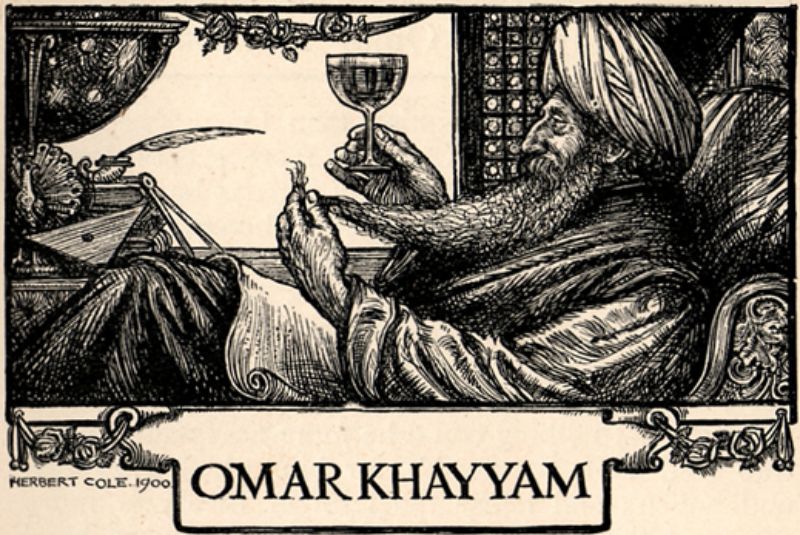
Born in the vibrant heart of Nishapur, Iran, Omar Khayyam's cradle was a bustling city thrumming with the whispers of knowledge. Under the tutelage of renowned scholars like Imam Muwaffaq Nishaburi, his mind became a sponge, soaking up the intricacies of science, philosophy, mathematics, and the captivating mysteries of the heavens. Driven by an insatiable thirst for understanding, his journeys extended beyond the city walls, leading him to the famed libraries of Bukhara and Samarkand. Within these ancient sanctuaries, he devoured wisdom from dusty scrolls and engaged in spirited debates with brilliant minds, fueling his insatiable quest for knowledge.
| Suggestion: The Greatest Persian Poets throughout the History
Omar Khayyam's Royal Recognition (1074-1079)
Fate took a decisive turn when Khayyam's brilliance caught the eye of Sultan Malik-Shah and his influential vizier, Nizam al-Mulk. Recognizing his exceptional talent, they entrusted him with a formidable task - the revision of the Persian calendar, a project fraught with astronomical complexities. Undeterred, Khayyam assembled a team of skilled scientists and embarked on a meticulous quest. With unwavering dedication and meticulous observations of the heavens, they crafted the Jalali calendar, a masterpiece of astronomical precision that remains relevant even today. This remarkable achievement cemented Khayyam's reputation as a leading scientific figure, his name forever etched in the annals of celestial exploration.
| Suggestion: Molla Sadra - Persian Philosopher and Theologian
Shifting Tides and Personal Reorientation (1079-1112)

The sands of fortune, however, shifted with the untimely demise of his patrons. Whispers of unorthodox views, perhaps fueled by his intellectual daring, cast a shadow over Khayyam's position. Seeking to dispel any doubts and reaffirm his faith, he undertook a pilgrimage to Mecca, a journey that may have held both spiritual and strategic purpose. While his later service as court astrologer for Sultan Sanjar offered a brief return to royal favor, eventually, Khayyam withdrew from the court, choosing the solace of his beloved Nishapur and a more private life in his later years.
Enduring Legacy and Final Rest (1112-1131)
Omar Khayyam's light dimmed in 1131, leaving behind a legacy that stretches far beyond the realms of science and astronomy. His impact echoes through time, a testament to the enduring power of intellectual curiosity and a dedication to truth. The Mausoleum of Omar Khayyam in Nishapur, also known as the Khayyam Tomb, stands as a silent ode to his brilliance, a place where visitors come to pay homage to his contributions. Yet, beyond his scientific achievements, it is Khayyam's captivating personality and the whispers of his unorthodox spirit that continue to intrigue and inspire generations. His life, a tapestry woven with threads of learning, ambition, and a hint of mystery, ensures that his story will remain forever etched in the annals of history.
Omar Khayyam and Astronomy
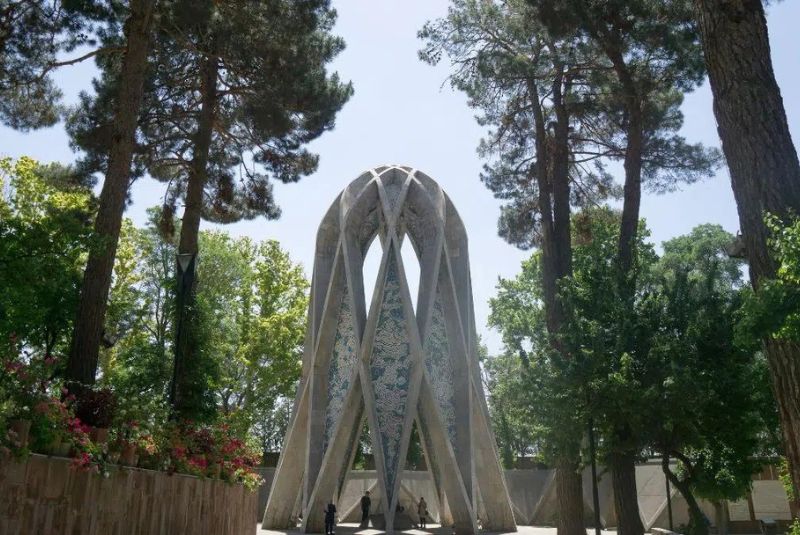
Omar Khayyam's contributions to astronomy were significant during his time and left a lasting impact on the field.
Jalali Calendar (Persian Solar Calendar)
Sultan Malik-Shah entrusted him with the monumental task of constructing an observatory in Isfahan and reforming the Persian calendar, a project requiring meticulous precision and collaboration.
Khayyam led a team of eight scholars in extensive astronomical observations, revising astronomical tables with remarkable accuracy. This meticulous approach laid the foundation for the remarkable precision of the Jalali calendar.
Recalibrating the calendar ensured the first day of the year coincided with the exact moment the sun's center crossed the vernal equinox, marking the onset of spring and the traditional Nowruz celebration.
The resulting Jalali calendar, named in Malik-Shah's honor, employed a unique 33-year intercalation cycle to maintain its solar alignment. This system incorporated both four-year and five-year leap years, contributing to its exceptional accuracy.
The Jalali calendar remained in use throughout Greater Iran for centuries, eventually becoming the official national calendar of Qajar Iran in 1911. While modifications in 1925 led to the modern Iranian calendar, the Jalali system's underlying principles continue to impress.
Compared to the Gregorian calendar, the Jalali calendar boasts superior accuracy. With an error of just one day accumulating over 5,000 years, it surpasses its European counterpart, which accumulates the same error every 3,330 years. This testament to Khayyam's meticulousness earned the Jalali calendar praise from renowned experts such as Moritz Cantor, who deemed it "the most perfect calendar ever devised."
Sun's Motion
Khayyam worked on the parallel lines of the sun's motion, which led him to deduce the Earth's axial tilt, which is the angle between the Earth's rotational axis and its orbital plane around the sun, with a higher degree of accuracy. His calculations were remarkably accurate for his era, contributing to the advancement of astronomical knowledge related to the Earth's position in the solar system.
Omar Khayyam as Mathematician
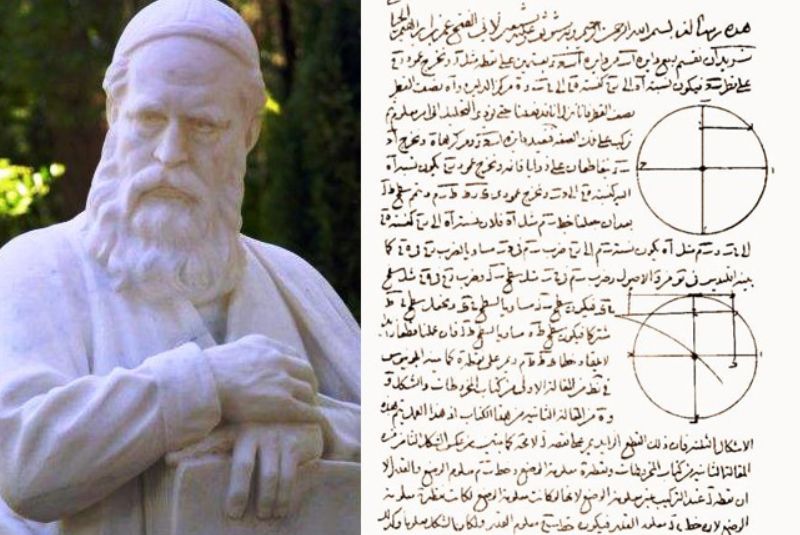
Omar Khayyam made significant contributions to various branches of mathematics, particularly in algebra and geometry, which were groundbreaking during his time and continue to be influential in mathematics today.
- Solution of cubic equations: Khayyam's most renowned mathematical achievement was his work on solving cubic equations. In his treatise "Treatise on Demonstration of Problems of Algebra," he developed a method for solving cubic equations using intersecting conic sections (specifically, the intersection of a circle and a hyperbola). This method was a fundamental breakthrough in algebra and was a precursor to later developments in the field.
- Classification of cubic equations: Khayyam classified cubic equations based on the number of positive roots, anticipating the concepts of discriminants and the nature of roots in algebraic equations.
- Extension of Euclidean geometry: Khayyam's geometrical work involved an extension of Euclidean geometry. He explored the foundations of geometry, specifically in relation to lines, shapes, and constructions, contributing to the understanding of geometric principles.
- Questioning Euclid's Axiom: While acknowledging the validity of Euclid's famous fifth postulate within traditional geometry, Khayyam explored alternative possibilities where parallel lines could diverge. This laid the groundwork for the development of non-Euclidean geometry centuries later.
- Expanding the Numerical Realm: Recognizing the limitations of integers, Khayyam embraced the concept of real numbers, encompassing fractions, decimals, and irrational numbers. This broader understanding of numerical relationships proved crucial for future mathematical developments.
- Geometric Solutions for Algebraic Problems: Khayyam's geometric algebra combined the strengths of both disciplines, offering a powerful tool for solving complex equations. He visualized algebraic expressions as geometric shapes, allowing for their manipulation with elegant geometric methods still employed today.
Other Contributions of Omar Khayyam
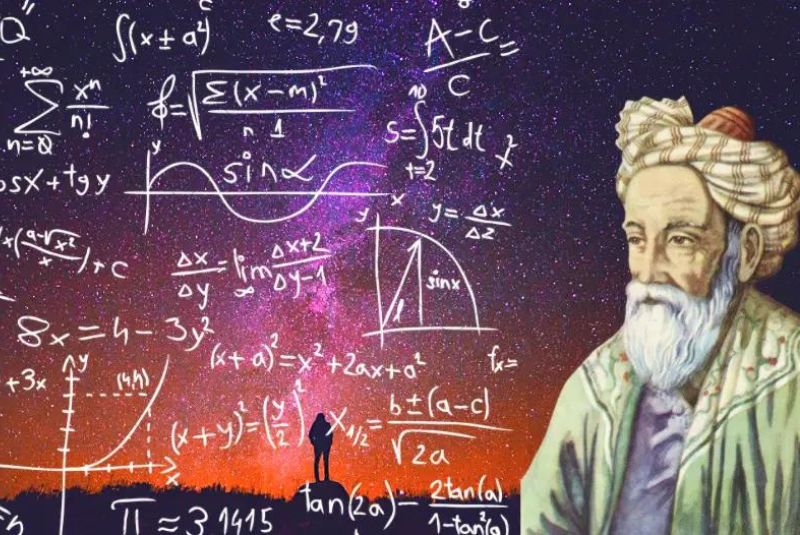
Khayyam's intellectual reach extended far beyond the celestial realm, delving into diverse fields with remarkable acumen. Here are some lesser-known facets of his brilliance:
- Master of Measurement: His treatise on Archimedes' principle, titled "On the Deception of Knowing the Two Quantities of Gold and Silver in a Compound Made of the Two," reveals a precise method for measuring the gold and silver content in an alloy. This technique, employing weight and water displacement, surpassed the accuracy of previous methods, showcasing Khayyam's keen understanding of physics and practical application.
- Harmonious Numbers: Khayyam's musical treatise explored the intricate relationship between music and arithmetic. He systematically classified musical scales, analyzing the mathematical connections between notes and intervals, paving the way for a deeper understanding of musical structure.
- Avicenna's Disciple: Khayyam acknowledged Avicenna as his intellectual mentor, deeply engaged in the philosopher's "Book of Healing" even on his deathbed. This influence is evident in his six philosophical treatises, delving into topics like existence, universals, free will, and determinism.
- Truth Seeker in a Skeptical Age: Khayyam lamented the intellectual climate of his time, lamenting the "discrediting of men of science" and the prevalence of superficiality among philosophers. He saw himself as a lone voice pursuing truth amidst skepticism, a testament to his unwavering dedication to knowledge and intellectual integrity.
| Also read about: Persian Literature - Iranian Literary Heritage
The Poet Omar Khayyam

Khayyam is renowned for his collection of quatrains, known as the Rubaiyat, which delves into various themes such as the transient nature of life, the uncertainty of the future, the importance of living in the present moment, and the enjoyment of life's pleasures. These quatrains, written in a loose, conversational style, explore existential themes while expressing skepticism towards religious dogma.
Omar Khayyam poems, characterized by their philosophical depth, continue to resonate with readers worldwide. Despite being penned centuries ago, his poetry evokes universal emotions and themes. His skepticism towards religious norms and his emphasis on embracing life's pleasures made his poetry both controversial and influential, attracting a diverse audience fascinated by his unique perspective on life and existence. Furthermore, the richness of his language and the vivid imagery in his verses contribute to his enduring popularity as a poet.
The Rubaiyat itself consists of quatrains—four-line poems with a rhyming pattern in the first, second, and fourth lines. These quatrains encompass a wide range of themes:
- The brevity of life: Khayyam's verses often convey the fleeting nature of human existence, encouraging readers to seize the moment and make the most out of their limited time on earth.
- Wine and pleasure: Khayyam advocates for embracing life's simple pleasures—indulging in good food, savoring wine, and cherishing the company of friends—as a means to momentarily escape the inevitable pains and hardships of life.
- Love and beauty: Celebrating the beauty of love and the natural world, Khayyam's poetry portrays these elements as sources of joy and wonder, fostering an appreciation for life's inherent beauty.
- Religion and doubt: As a freethinker challenging prevalent religious beliefs, Khayyam's poems express doubt and skepticism regarding conventional notions of the afterlife, divinity, and religious doctrines.
Though not widely recognized during Khayyam's lifetime, the Rubaiyat gained prominence in the 19th century in the West after Edward Fitzgerald's loose English translation. Fitzgerald's interpretation, while not a literal rendering, captured the essence of Khayyam's poetry, making it accessible to a broader audience. Praised for its beautiful imagery, philosophical depth, and celebration of life, the Rubaiyat has influenced numerous writers and artists, including T.S. Eliot, Ezra Pound, and W.B. Yeats, leaving an indelible mark on Western literature and culture.
Here are a few of Omar Khayyam's verses in Farsi (Persian) along with English translations:
خرابات جام دردها را بیشتر
گرد خویشاوند و دوستان جوی
وقت ننگرد به آنچه گذشت از ما
زیرا که ندانیم چه خواهد شد ما
The wine-house and the beloved seek,
Leave kinsfolk and friends, go forth and speak!
Waste not your hour on what has passed away,
For you know neither what's to come nor what's today.
گل برگردان بهار آمد و رفت
زندگی به گل نیکو و خوب نگفت
باقی از عمر به کار خود بسپار
ماضی به درد و آینده به هوا نگفت
The roses are blooming; spring comes and then departs,
Life never told the rose's story to our hearts.
Trust the rest of life to what it has in store,
The past is pain and the future, just air and more.
Omar Khayyam Quotes: A Touch of Wisdom
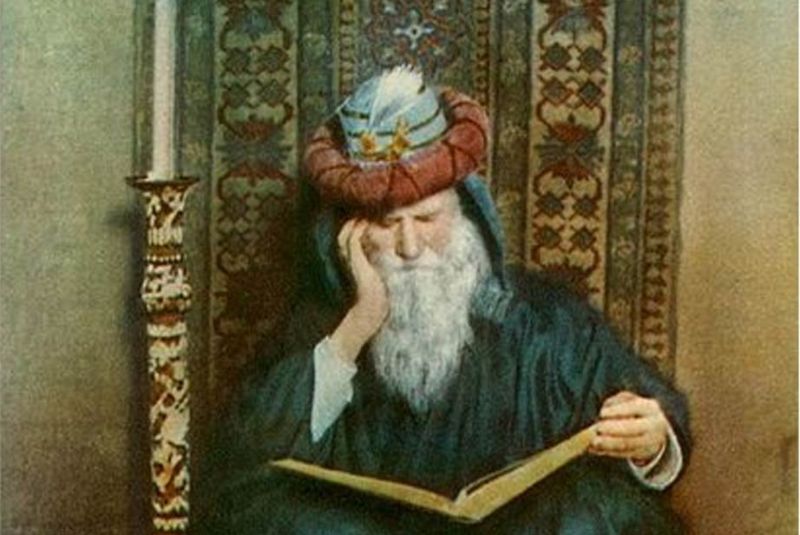
Omar Khayyam, the name conjures images of moonlit revelry, verses carved on windblown sands, and quatrains whispering of love and mortality. But beyond the romanticized image of the poet-astronomer lies a treasure trove of philosophical musings, observations on life's fleeting nature, and witty pronouncements that still resonate across the centuries.
Forget carpe diem clichés – Khayyam's words pierce deeper, urging us to not merely seize the day, but to grapple with the very fabric of existence. We see this in the poignant refrain, "The Moving Finger writes, and, having writ, Moves on: nor all thy Piety nor Wit, Shall lure it back to cancel half a Line, Nor all thy Tears wash out a Word of it." A stark reminder of fate's unyielding hand, it prompts us to savor each moment, for like ink upon parchment, what's done is done.
Khayyam wasn't one for sugarcoating realities. He questioned, he poked fun at our pretensions, and challenged us to find meaning in the absurd. "Were't not a shame, this foolery of Time and Chance, This jesting with our joys and our desires?" he asks, his voice echoing across the halls of cosmic uncertainty. Yet, his cynicism is always tempered with a wry acceptance, a knowing wink at the grand play of life.
But it's not all existential angst and wine-soaked contemplation. Khayyam also celebrates the simple joys, the quiet pleasures of companionship, nature, and intellectual pursuits. "A loaf of bread, a jug of wine, and thou Beside me singing in the wilderness— And wilderness is paradise enow," he reminds us, showcasing the richness found in ordinary moments.
| Suggestion: Attar of Nishapur - The Sufi Poet and Philosopher
Omar Khayyam Books
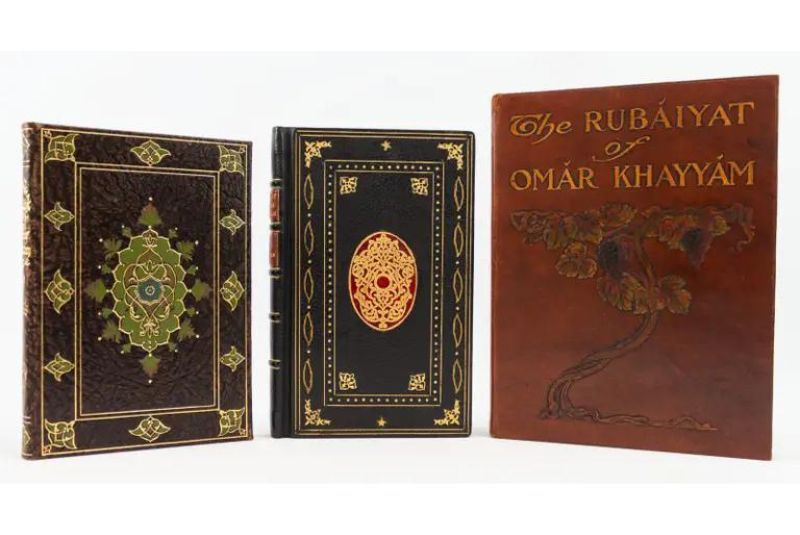
- Risāla fī Sharḥ mā Ashkal min Muṣādarāt Kitāb Uqlīdis (Commentary on the Difficulties Concerning the Postulates of Euclid's Elements): Completed in 1077, this treatise showcases Khayyam's mastery of geometry and his critical approach to mathematical foundations.
- Risālah fī Qismah Rub' al-Dā'irah (Treatise On the Division of a Quadrant of a Circle): This undated work delves into trigonometry and spherical geometry, highlighting Khayyam's contributions to astronomy and navigation.
- Risālah fi al-Jabr wa'l-Muqābala (Treatise on Algebra): Completed in 1079, this text is considered a milestone in the development of algebra, introducing innovative solutions and laying the groundwork for future advancements.
- Fi'l-wujūd (On existence): Written in Persian, this treatise explores the nature of existence, universals, and the relationship between the physical and metaphysical realms.
- Darurat al-tadād fi'l-‘ālam wa’l-jabr wa’l-baqā’ (The necessity of contradiction in the world, determinism and subsistence): This Arabic work tackles the complex issues of free will, determinism, and the role of contradiction in understanding the universe.
- Other treatises: Titles like "On being and necessity," "The Treatise on Transcendence in Existence," and "On the knowledge of the universal principles of existence" suggest Khayyam's wide-ranging philosophical inquiries.
Bottom Line
Let this not be the last page. Dive deeper into the Rubaiyat of Omar Khayyam, let its verses dance on your tongue. Devour his treatises, and witness the gears of his genius turn. And if your path leads east, stand beneath the Nishapur sky, taste the air he breathed, and feel the enigma stir within you.
Share your story!
Comment below and let us know about your Experience.
Your story inspires others!


Comment
Leave a Comment